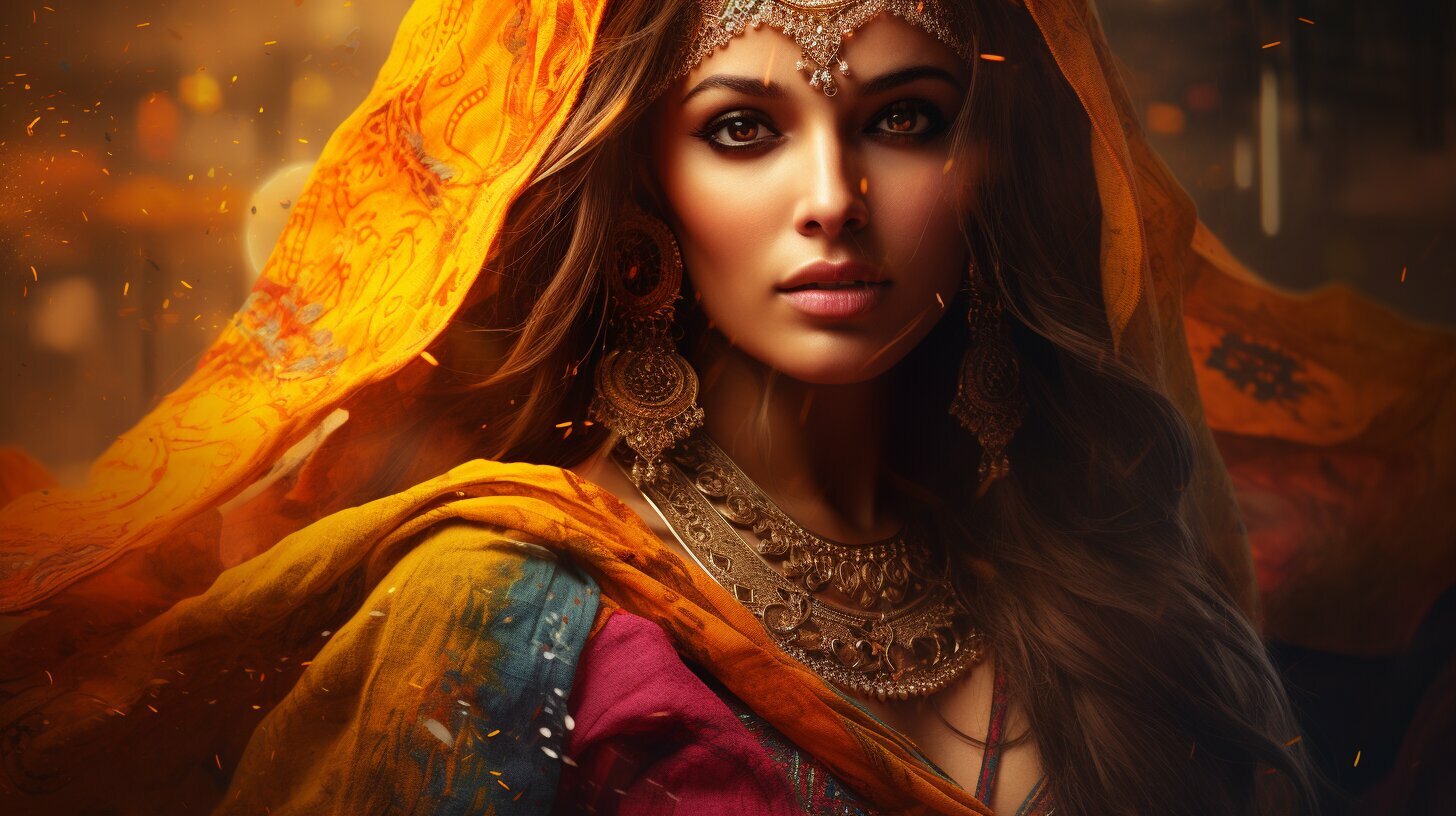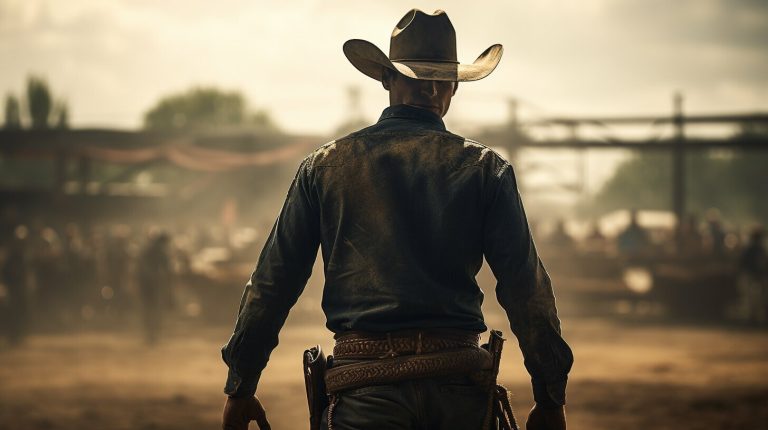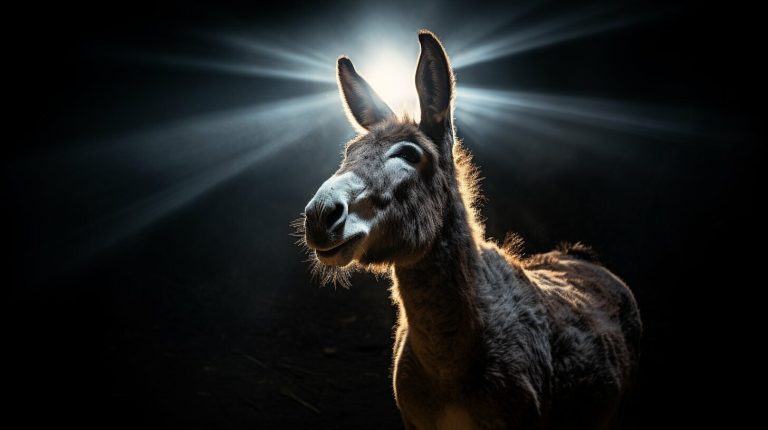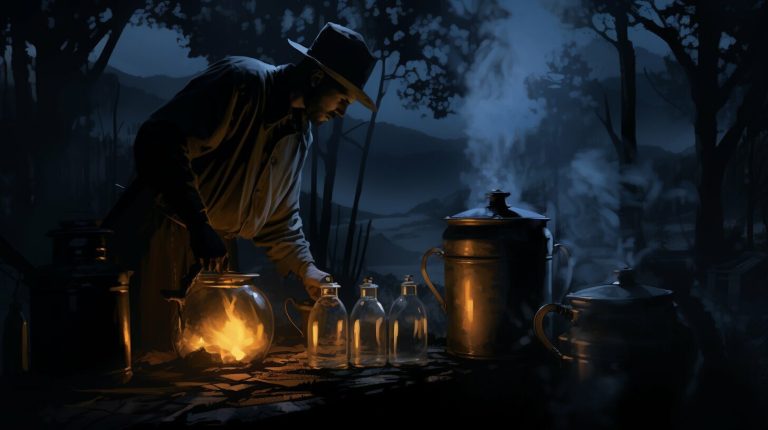Unraveling the Mystery: Why is it Called Bollywood?
The term “Bollywood” has become synonymous with the Indian film industry, but have you ever wondered how it got its name? Well, let’s dive into the fascinating origin and etymology of Bollywood!
In the 1970s, the Indian film industry surpassed Hollywood in terms of popularity, and it was during this time that the name “Bollywood” emerged. The term is derived from Bombay, which is now known as Mumbai, the city where the industry is based.
Today, Bollywood is not only the largest film industry in India but also the world, producing and releasing a staggering number of films each year. It has gained global recognition for its unique blend of music, dance, and storytelling.
Key Takeaways:
- Bollywood originated in the 1970s when the Indian film industry surpassed Hollywood in popularity.
- The name “Bollywood” is derived from Bombay, now Mumbai, where the industry is based.
- Bollywood is the largest film industry in India and the world, producing a large number of films annually.
- The industry is known for its unique blend of music, dance, and storytelling.
- Bollywood dance is a fusion of various dance forms, incorporating classical Indian dance and Western styles.
The Birth of Bollywood: A Brief History of Indian Cinema
To understand why it’s called Bollywood, we need to take a trip back in time to the birth of Indian cinema. The history of Indian cinema dates back to 1913 when Dadasaheb Phalke made the first full-length Indian film, “Raja Harishchandra.” This marked the beginning of a new era for Indian cinema and laid the foundation for what would later become Bollywood.
In the early years, Indian films were heavily influenced by Western cinema, with a focus on silent movies. However, in 1931, the first Indian film with a soundtrack was released, titled “Alam Ara.” This marked a significant turning point in Indian cinema, as music became an integral part of the storytelling process.
Over time, Indian cinema evolved and developed its own unique style, blending music, dance, and storytelling. This distinct style became synonymous with the Indian film industry and eventually led to the term “Bollywood” being coined. The name is derived from Bombay, which is now known as Mumbai, where the industry is based. As Mumbai became the center of Indian cinema, the term “Bollywood” gained popularity and is now commonly used to refer to the Hindi film industry.
The Rise of Bollywood
Since its inception, Bollywood has grown to become the largest film industry in India and the world. It produces and releases a vast number of films each year, captivating audiences both within India and globally. The popularity of Bollywood can be attributed to its unique blend of music, dance, and storytelling, which sets it apart from other film industries around the world.
Today, Bollywood stars are not only celebrated in India but have also gained international recognition. The rise of Bollywood stars like Shah Rukh Khan, Priyanka Chopra, and Deepika Padukone has taken the industry to new heights, with their films being watched and appreciated by audiences worldwide. Their talent, charisma, and dedication have played a significant role in promoting Bollywood on the global stage.
| Bollywood Facts |
|---|
| Bollywood is the largest film industry in India and the world. |
| The first Indian film with a soundtrack was released in 1931. |
| Bollywood films are known for their unique blend of music, dance, and storytelling. |
| The term “Bollywood” is derived from Bombay, which is now Mumbai. |
| Bollywood stars have gained international recognition and popularity. |
The Blend that Sets Bollywood Apart: Music, Dance, and Storytelling
What makes Bollywood truly remarkable is its seamless integration of music, dance, and storytelling. From the captivating melodies that bring emotions to life to the enchanting dance sequences that add a vibrant energy, Bollywood films are a feast for the senses. This harmonious blend is what sets Bollywood apart from other film industries, making it a unique and cherished art form.
In the colorful world of Bollywood, music is not just a background score but an essential storytelling tool. Every emotion, every narrative twist, and every character’s journey is beautifully expressed through the power of song. Whether it’s a heart-wrenching ballad that moves you to tears or a joyful dance number that fills you with happiness, the music in Bollywood films has the ability to captivate audiences and create a lasting impact.
The dance sequences in Bollywood films are nothing short of spectacular. Drawing inspiration from various dance forms such as classical Indian dance, jazz, and hip-hop, Bollywood dance is a fusion like no other. With intricate choreography, expressive gestures, and dazzling costumes, these dance numbers are a visual extravaganza. They not only entertain but also advance the plot, adding depth and dimension to the storytelling.
Bollywood’s storytelling is characterized by its ability to evoke a range of emotions. The films often explore universal themes such as love, family, and ambition, while incorporating elements of drama, romance, comedy, and action. With compelling narratives and relatable characters, Bollywood films have the power to transport audiences into a world filled with emotion, excitement, and larger-than-life experiences.
| Song | Movie | Singer |
|---|---|---|
| Tere Bina | Guru | A.R. Rahman |
| Chaiyya Chaiyya | Dil Se.. | Sukhwinder Singh |
| Deewani Mastani | Bajirao Mastani | Shreya Ghoshal |
- The dance sequences in Bollywood films are a visual extravaganza, combining elements of classical Indian dance, jazz, and hip-hop.
- Bollywood films are known for their enchanting music, which serves as a powerful storytelling tool.
- With compelling narratives and relatable characters, Bollywood films have the ability to evoke a range of emotions and transport audiences into a world of larger-than-life experiences.
“Bollywood is not just a film industry, it is an emotion that connects people across borders and cultures.” – Shah Rukh Khan
The Impact of Bollywood
Bollywood has not only captured the hearts of millions in India but has also gained global recognition and a dedicated fan base worldwide. Its influence extends beyond the confines of the silver screen, impacting fashion, music, and even dance forms outside of India. The vibrant and celebratory nature of Bollywood films has made them a source of joy and entertainment for people of all backgrounds.
Bollywood Dance: A Fusion of Styles
When it comes to Bollywood, the dance sequences are as vibrant and energetic as the movies themselves. The fusion of various dance forms in Bollywood adds a unique flavor to its storytelling. From classical Indian dance like Bharatanatyam and Kathak to Western styles like jazz and hip-hop, Bollywood dance incorporates a wide range of movements and techniques.
The dance sequences in Bollywood films are meticulously choreographed and serve as a form of expression for the characters. They enhance the narrative, often conveying emotions and advancing the plot. The combination of footwork, mudras (hand gestures), head, neck, and body movements create a visual spectacle that captivates audiences.
Bollywood dance is a celebration of rhythm and joy. It is known for its infectious energy, colorful costumes, and synchronized movements. The dancers exude charisma and exuberance, bringing life to every step they take. Whether it’s a romantic duet, a group performance, or a high-energy item number, Bollywood dance never fails to entertain.
| Dance Forms | Influences |
|---|---|
| Bharatanatyam | Classical Indian dance |
| Kathak | Classical Indian dance |
| Jazz | Western dance |
| Hip-hop | Western dance |
“Bollywood dance is a beautiful blend of tradition and modernity, a celebration of culture and creativity.” – Renowned Bollywood choreographer
As Bollywood continues to evolve, so does its dance style. It pushes boundaries and embraces new influences, making it a dynamic and ever-changing art form. Whether you’re a fan of Bollywood films or simply appreciate the power of dance, experiencing the magic of Bollywood dance is an unforgettable experience.
The Rise of Bollywood Stars: From Bombay to Global Recognition
Over the years, Bollywood has produced and nurtured countless talented actors who have gained international fame. From the charismatic and versatile Shah Rukh Khan to the stunning and graceful Priyanka Chopra, these stars have captivated audiences not just in India, but across the globe. With their immense talent, charm, and dedication, Bollywood actors have carved a niche for themselves in the ever-evolving world of cinema.
One of the most iconic Bollywood stars to emerge is Amitabh Bachchan, who rose to fame in the 1970s and became known as the “angry young man” of Indian cinema. His powerful performances in movies such as “Deewaar” and “Sholay” cemented his status as a superstar. Today, Bachchan is not just a beloved actor, but also a respected figure in the film industry.
Another Bollywood star who has made a mark on the international stage is Deepika Padukone. With her striking beauty and incredible talent, she has become a global icon. Padukone has not only captivated audiences with her performances in movies like “Padmaavat” and “Chennai Express,” but she has also made headlines for her activism and advocacy on mental health.
It’s not just the actors who have gained global recognition, but also the actresses. Priyanka Chopra, for instance, has successfully made the transition from Bollywood to Hollywood. She has starred in popular American television series like “Quantico” and has appeared in blockbuster films like “Baywatch.” Chopra’s achievements have shattered barriers and opened doors for aspiring Indian actors in the international arena.
| Bollywood Actor | Notable Films | International Recognition |
|---|---|---|
| Amitabh Bachchan | Deewaar, Sholay | Respected figure in the film industry |
| Deepika Padukone | Padmaavat, Chennai Express | Global icon and mental health activist |
| Priyanka Chopra | Baywatch, Quantico | Successful transition from Bollywood to Hollywood |
The success of these Bollywood stars is a testament to the immense talent and diversity of the Indian film industry. Bollywood has not only entertained audiences for decades, but it has also paved the way for cultural exchange and global recognition. As the industry continues to evolve, we can expect to see more talented actors from Bollywood making waves on the international stage.
Conclusion
The term Bollywood may have originated in Bombay, but its impact and reach have transcended borders and made it a global phenomenon. With its unique blend of music, dance, and storytelling, Bollywood has captured the hearts of audiences around the world.
From its humble beginnings in the early 20th century, Indian cinema has come a long way. The first full-length Indian film, “Raja Harishchandra,” paved the way for the growth and evolution of Bollywood. Over the years, the industry has witnessed the introduction of sound in films and the rise of iconic dance sequences that have become synonymous with Bollywood.
The dance style of Bollywood is a fusion of various dance forms, incorporating classical Indian dance like Bharatanatyam and Kathak, as well as Western styles like jazz and hip-hop. This unique blend of movements, combined with expressive expressions and footwork, adds an infectious energy to Bollywood films.
Today, Bollywood stars are recognized and celebrated not only in India but also on a global scale. Their charisma and talent have propelled them to international fame, making them household names around the world.
In conclusion, Bollywood is more than just a name; it represents a vibrant and dynamic film industry that continues to captivate audiences with its music, dance, and storytelling. Its influence and popularity have spread far and wide, making it a cultural phenomenon that will continue to enchant viewers for years to come.
FAQ
Why is it called Bollywood?
The term “Bollywood” originated in the 1970s when the Indian film industry surpassed Hollywood in popularity. It is derived from Bombay, which is now Mumbai, the city where the industry is based.
What is the history of Indian cinema?
The first full-length Indian film, “Raja Harishchandra,” was made in 1913. The industry continued to grow, and the first Indian film with a soundtrack, “Alam Ara,” was released in 1931.
How does music and dance play a role in Bollywood films?
Music and dance are integral parts of storytelling in Bollywood. The industry incorporates a wide range of dance styles, including classical Indian dance forms like Bharatanatyam and Kathak, as well as Western styles like jazz and hip-hop.
What is unique about Bollywood dance?
Bollywood dance is a fusion of various dance forms, incorporating head, neck, and body movements, mudras (hand gestures), and footwork. It is known for its energetic and vibrant performances.
How did Bollywood stars gain global recognition?
Bollywood stars have risen to global recognition through their talent and the popularity of Indian films. The industry has gained a worldwide audience, making Bollywood stars household names internationally.
- Discovering Why Do Women Wear Lipstick: A Deeper Look - 19/12/2023
- Why Do Golfers Only Wear One Glove? - 16/12/2023
- Why Don’t Hobbits Wear Shoes? - 14/12/2023
Hi, I’m Rhiannon, the lead author behind The News Wire. As a passionate journalist, I strive to bring you the latest news and updates from all over the world. With a keen eye for detail and a dedication to unbiased reporting, I aim to deliver well-researched and informative articles that keep you informed and engaged. From breaking news to in-depth analyses, I cover a wide range of topics with the aim of keeping you in the loop. Join me on The News Wire as we explore the dynamic and ever-changing landscapes of global events, uncovering the stories that matter most.






